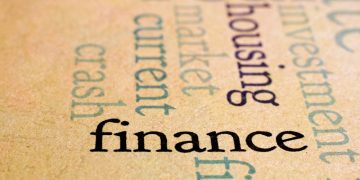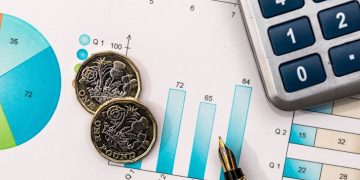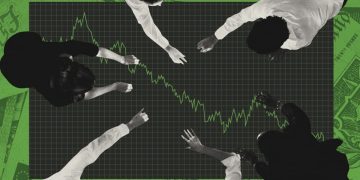In a world increasingly focused on climate action and responsible investing, green bonds have emerged as a cornerstone of sustainable finance. These debt instruments, designed to fund projects with clear environmental benefits, are not only attracting an ever-growing pool of investors but are also reshaping capital markets to better align with the goals of the Paris Agreement and the UN’s Sustainable Development Goals (SDGs). As ESG (Environmental, Social, and Governance) investing becomes more mainstream, green bonds are gaining traction across borders, industries, and asset classes. But are they truly the future of finance—or just a stepping stone to a greener monetary system?
Introduction: The Growing Popularity of Green Bonds as a Tool for Sustainable Investing
The concept of green bonds isn’t new—they were first issued in 2007 by the European Investment Bank (EIB) and the World Bank. However, it wasn’t until the past five years that green bonds transitioned from niche instruments to mainstream financial assets. As the climate crisis intensifies and public pressure for environmental accountability mounts, governments, corporations, and supranational institutions have turned to green bonds as a way to mobilize capital toward low-carbon infrastructure, renewable energy, sustainable agriculture, and climate-resilient urban development.
Green bonds have become a preferred tool for signaling environmental responsibility. By earmarking funds specifically for environmental or climate-related projects, issuers can tap into a segment of investors who prioritize sustainability alongside returns. This unique blend of ethical and financial appeal has propelled green bond issuance to record levels, with 2023 seeing over $600 billion in new issuances globally—a figure expected to grow further in 2024 and beyond.
The question today is not whether green bonds will grow, but how they will evolve. Their rise has prompted a rethinking of how capital markets can be used to tackle global environmental challenges—making them a key piece of the broader sustainable finance puzzle.
Current Market Trends: How Green Bonds Are Performing and What Sectors They Fund
Green bonds now constitute one of the fastest-growing segments in global fixed-income markets. From municipal transit systems and solar farms to energy-efficient real estate and green hydrogen, the range of funded projects has diversified significantly. What started as a product issued mainly by development banks has expanded to include sovereign states, multinational corporations, and even city governments.
In 2023, sovereign green bonds from countries like Germany, France, and the UK saw robust demand, often being oversubscribed multiple times. Meanwhile, emerging economies such as Chile, Indonesia, and Nigeria have also tapped into the green bond market to fund clean energy and climate adaptation projects, proving that sustainable finance is not limited to the Global North.
Sector-wise, the largest allocation of green bond proceeds continues to be in energy, particularly renewable energy installations like wind and solar farms. However, other sectors are catching up. Green buildings now represent a significant share, with real estate developers using green bonds to fund energy-efficient construction and retrofitting. Transportation, particularly electrified and low-carbon public transit, is another rapidly expanding recipient of green financing. Water management, waste reduction, and sustainable agriculture are also drawing more investment through this channel.
Performance-wise, green bonds generally mirror the returns of conventional bonds with similar risk profiles, but offer an added layer of environmental impact. Interestingly, studies from institutions like the IMF and the World Bank suggest that green bonds may have slightly lower volatility, making them attractive to investors seeking stability and positive ESG exposure.
Yet, the green bond market is not without its growing pains. Concerns over “greenwashing”—when proceeds are used for projects that are only marginally beneficial or ambiguously green—persist. This has led to increasing demand for transparency, third-party verification, and adherence to recognized standards like the Green Bond Principles (GBP) or the Climate Bonds Initiative (CBI) taxonomy.
Investor Appetite: The Appeal of Green Bonds for Institutional and Retail Investors
Investor demand for green bonds has exploded, and for good reason. These instruments offer a blend of risk-adjusted returns and demonstrable environmental impact—an increasingly important combination for today’s investors. Institutional investors, such as pension funds, insurance companies, and sovereign wealth funds, are particularly drawn to green bonds because they align with long-term ESG mandates and de-risk portfolios against climate-related financial risks.
Pension funds, for example, face long-dated liabilities and need stable, low-risk returns that also meet sustainability goals mandated by beneficiaries. Green bonds offer that dual benefit. Insurance companies, too, are incorporating ESG considerations into their investment strategies, particularly given their exposure to climate-induced catastrophes. Many of these institutional investors are part of initiatives like the Net-Zero Asset Owner Alliance, which commits them to decarbonizing their portfolios—a target green bonds help achieve.
On the retail side, individual investors are increasingly participating in green bond ETFs and mutual funds, driven by a desire to align personal values with investment strategies. While direct access to primary green bond issues may still be limited for most retail investors, financial innovation is bridging that gap through accessible green bond indices and ESG-themed portfolios.
What’s especially compelling is the psychological shift. Investors no longer view financial performance and social responsibility as mutually exclusive. The modern investor, institutional or individual, is looking for “double bottom line” outcomes: solid returns and measurable environmental impact. Green bonds, when issued transparently and structured effectively, provide exactly that.
Moreover, central banks are taking note. The European Central Bank (ECB) and the Bank of Japan (BoJ) have begun integrating green bonds into their asset purchase programs, further validating their credibility and boosting demand. In some regions, green bonds may even receive preferential treatment under regulatory frameworks or tax incentives, thereby enhancing their appeal.

Future Potential: The Future Growth of Green Finance and Its Global Impact
The trajectory of green bonds points toward even greater relevance in the global financial ecosystem. Projections from BloombergNEF and the Climate Bonds Initiative suggest that green bond issuance could exceed $5 trillion annually by 2030, driven by heightened climate commitments and regulatory alignment with the goals of net zero.
One promising trend is the evolution of labeled bonds. Green bonds are increasingly being complemented by social bonds, sustainability bonds, and transition bonds—each serving a specific ESG purpose. “Blue bonds” for ocean conservation and “nature bonds” for biodiversity preservation are examples of how financial innovation is adapting to a wider array of environmental and social goals. This broadened taxonomy makes sustainable finance more inclusive and adaptable.
Technology will also play a role. Blockchain and digital ledger technologies can offer transparency and traceability, helping verify that proceeds are used for certified green projects. Tokenized green bonds and decentralized platforms may also democratize access, making it easier for smaller investors to participate.
On the regulatory front, progress is being made. The EU’s Sustainable Finance Disclosure Regulation (SFDR) and its Green Bond Standard aim to harmonize definitions and enforce reporting standards, reducing the risk of greenwashing. Similarly, the U.S. Securities and Exchange Commission (SEC) is exploring guidelines for ESG disclosures, which could set a precedent for global norms.
However, challenges remain. Not all countries have robust taxonomies for what qualifies as a green project, and inconsistent standards can confuse investors. Moreover, some sectors, such as heavy industry and aviation, are still struggling to issue credible green instruments due to the complexity of reducing emissions in those areas.
Geopolitical tensions could also affect the pace of green finance. The global economy remains fragile, and in periods of crisis or conflict, sustainability goals may take a backseat to short-term economic survival. Still, the general consensus among economists, asset managers, and policy-makers is that sustainable finance is no longer optional—it’s essential.
Ultimately, green bonds are much more than a trend. They represent a paradigm shift in how capital is allocated, measured, and managed. As climate change becomes the defining challenge of our time, financial instruments that bridge the gap between profit and purpose will play a critical role in shaping a resilient, low-carbon future.
Conclusion: Green Bonds as a Cornerstone of Sustainable Capital Markets
The meteoric rise of green bonds underscores a deeper transformation in global finance. Investors, issuers, and regulators are recognizing that economic prosperity and environmental stewardship can—and must—go hand in hand. While concerns about greenwashing and standardization remain, the momentum behind green bonds is undeniable.
As the climate crisis demands urgent and large-scale financial mobilization, green bonds are poised to become not just a preferred tool, but a foundational element of sustainable finance. They offer a viable path for aligning the objectives of capital markets with the needs of the planet. The next decade will determine whether they remain a powerful niche or evolve into the dominant form of fixed-income investment.





























